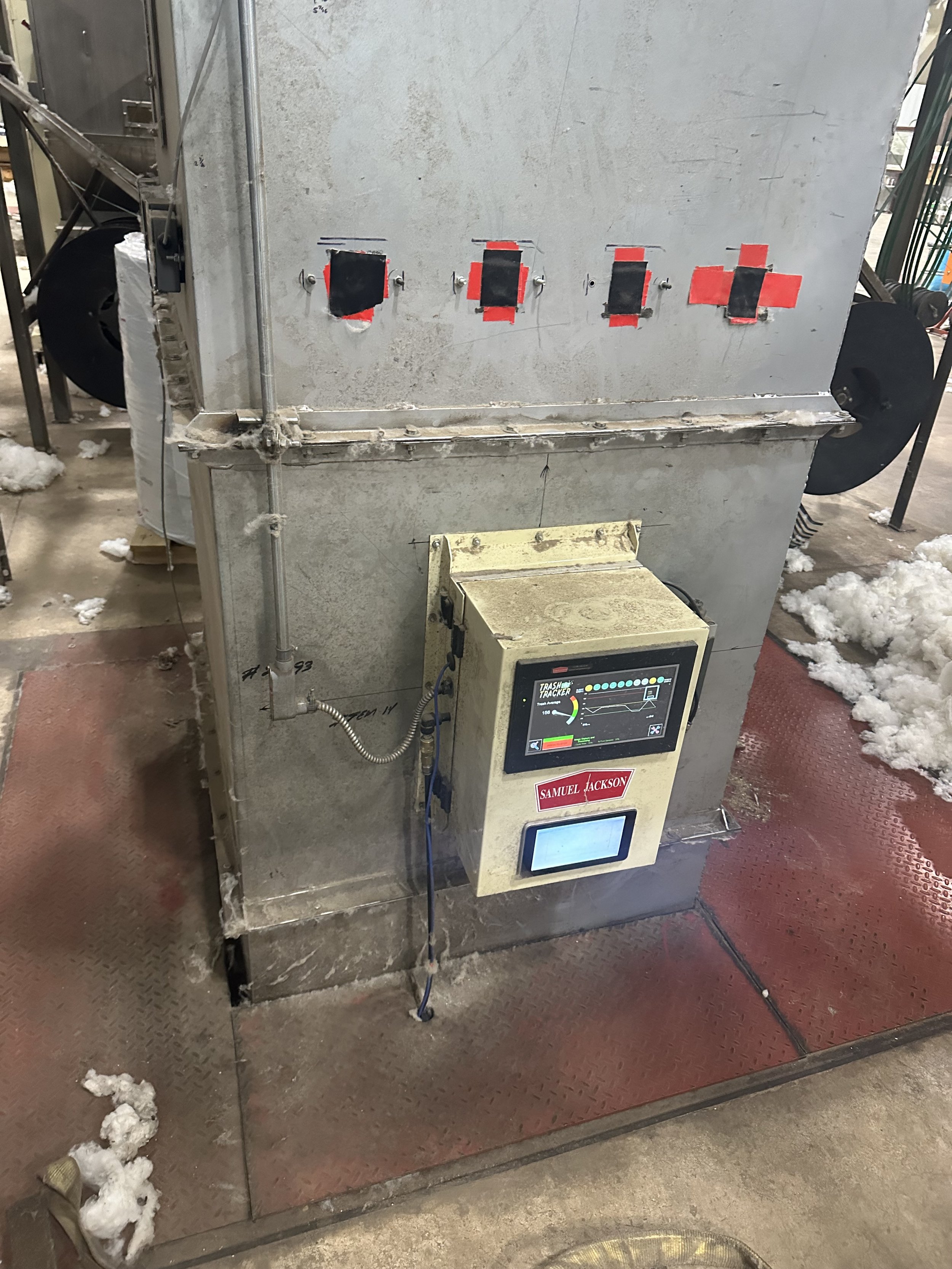Trash Tracker
In a gin, process variables such as moisture, pressure, temperature, amps, etc. are all provided to the ginner in real-time. A good ginner uses this information to make adjustments to keep these variables within spec. Good management of these variables leads to more profitable gins and their customers. Leaf grade is one of the most important variables in cotton value and yet at most gins this information remains unknown for days or weeks after ginning! Rest assured, every ginner already makes valuable decisions about customers leaf grade whether they know it or not. The question is whether or not to give them a tool to help them make better decisions in real-time. The Trash Tracker from Sam Jackson is designed to be the ginner’s new best friend.
The Trash Tracker takes a quick sample of the lint as it is airborne heading to the battery condenser and places the sample against a glass window where it is illuminated and photographed. The photo is quickly analyzed and assigned two numeric values, each between the range of 000 and 999. One value is the number of separate dark specks that the computer counted in the lint photo. The second value is the total surface area of all of those dark specks put together. From taking the sample to producing the result, the total time is less than seven seconds, which offers multiple samples for each bale ginned. This gives the gin operator a timely flow of feedback on how well he is cleaning up the cotton, while he has an opportunity to do something about it. He can adjust the drying, adjust the feed rate, or optimize cleaning to achieve the leaf “index number” that yields the best result on the USDA classing report that often comes to the gin days later.
How does the leaf index number relate to the leaf grade assigned by the classing office? The higher the leaf index numbers, the higher (lower value) the leaf grade will be from classing. The big difference is that there is a lot more resolution (a count of 1000) for the ginner to work with in the Trash Tracker than categories in the USDA classing system (7). It will not take long for a ginner to learn how to keep his gin cruising “between the navigational beacons” of a low and high leaf index value determined by a short period of experience and testing. When he does this, he keeps the gin’s customers happy with leaf content and the gin’s management happy with operating expenses.
Does this highly useful windshield give the ginner an excuse to mentally checkout and read a book while ginning? Definitely not! Remember that gins are running faster and conditions are changing more dramatically. If, for example, the glass in the Trash Tracker gets dirty, the ginner needs to realize that his lint doesn’t have more trash and that glass cleaner may be a better cure than more drying fuel to clean up the cotton. Common sense retains its traditionally high value!
Speaking of automation, is there an automatic option for the Trash Tracker to make the drying adjustments? Yes, there are multiple options for automatic control. These options include both control and drying components, depending on the performance level desired by the gin. Some of these options can help the ginner more quickly learn the correlation between USDA leaf grades and the Trash Tracker’s index values.










